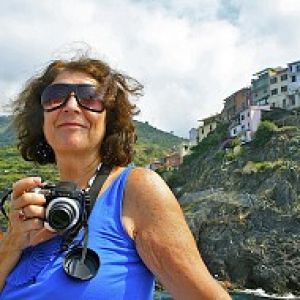High walking, high pass, and Kyrghiz music
the yurt proved to be too hot to sleep well. I had a visit ousidecat 1.30am to view the fantastic stars - I've had nothing so clear since the Karakoram in 1996. Someone came in to the yurt at 5 to light our stove so that woke us up for the day, though he was very quiet.
By 9.30 we were walking to the first Ridge with petroglyphs- it was , quite slow but not hard.. it was the Moldo-toor range, part of Tien Shan mountains. The next ridge was hard work to get to as it was steeper, but we made it. The sky was blue, the wind cold in our faces on way up and we had a few swirling flakes of snow. We descended quickly from 3400m, the walk lasting 3 hours.
We saw a proper felt shepherd's yurt beside his bigger Chinese one and a tent they stored food. Outside we saw cheese balls from cow milk drying on a platform. Near camp a sheepdog killed a sheep. As we left saw an eagle circle to get the carcasse.
After a quick picnic lunch, we set off 12.45 for the high pass.
Locals named it the Pass of 33 Parrots (Tesky-topok Pass) as in Soviet school maths books 1 snake was the length of 33 Parrots - and the way down from the top of the pass was snaking and twisting. Don't tell me the Soviets had no sense of humour!
It was a rough stoney dirt track, impassible if raining so we were lucky to see it in sun and showers. Stunning open scenery, high mountains, snowy peaks in distance. Cheery man waving from horse as he herded his herd of horses down for winter. Reached river which had flowed out of the high lake. Then climbed another pass, and down, spotting 3 eagles, eventually after 3 hours reached Chinese road, 120 miles from border. One more pass of 3000m to climb before descending to Koshkor.
Back in Kochkor we had wonderful folk music and singing in yurt out the back.
The folk music, held in a yurt in the garden of our house, was excellent. The ensemble, comprising 2 men and 3 women, was called 1000 Treasures. They have performed all over ex-Soviet countries. The instruments they played consisted of a small clay flute (Chopo-Choo), my favourite with its hauntingly Celtic sound, ,Kyk-kyaik was similar to the violin, a 3 stringed instrument, called a Komuz, a wind instrument called Choo, an accordion, a version of Jews Harp called.Temir-Kimuz, and the unusual Dyjgach-ooz-komuz, comprising a strip of wood with a thread. They sang Traditional ballads, some funny
- 8
- 0

Comments
Sign in or get an account to comment.


